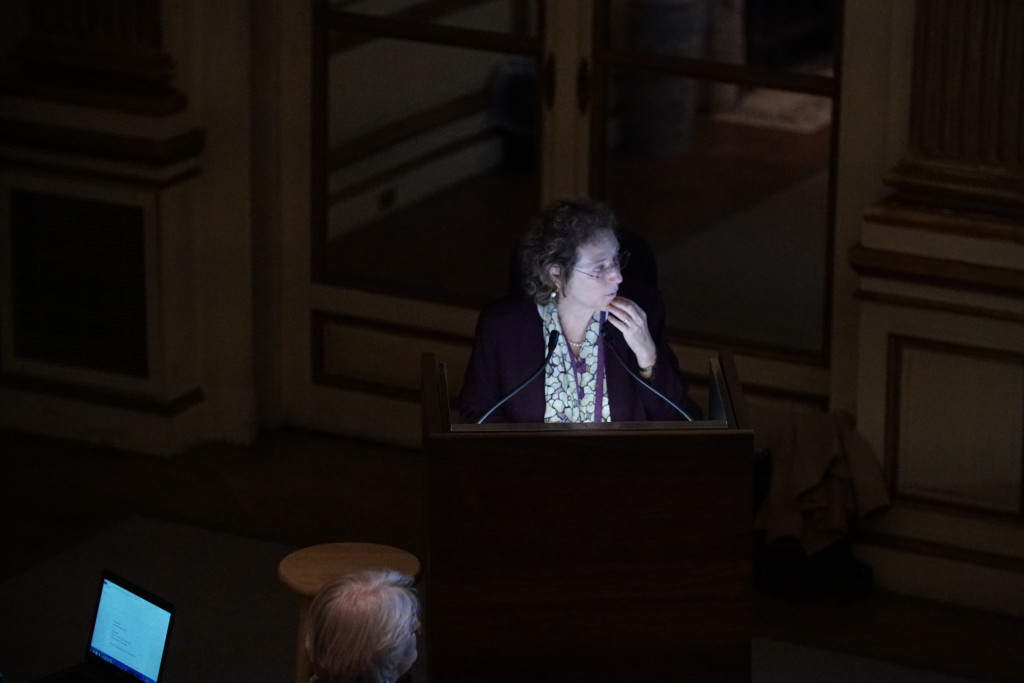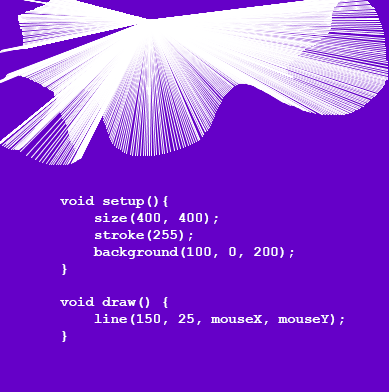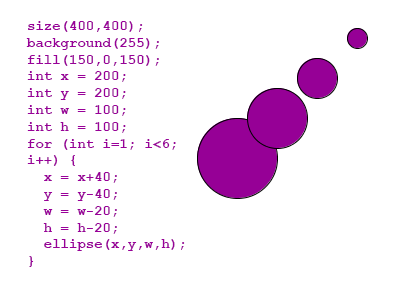This week’s contributing author, Xin Wang, is a writer and curator based in New York, as well as a first-year PhD student at the Institute of Fine Arts, New York University. Select writing and projects can be found at: https://blancdexin.com/

Deena Engel at the Lecture Hall, Institute of Fines Arts. Photo Courtesy of Nita Lee Roberts, Institute of Fine Arts, New York University.
For the November 14, 2016 installment of the IFA’s Time-Based Media Art Conservation lecture series, Deena Engel, Professor and Director of NYU’s newly established Digital Humanities and Social Science program at the Courant Institute of Mathematical Sciences, delivered an engrossing and highly accessible presentation on the application and implications of source code analysis in software-based art conservation.
Software-based art is a relatively new yet rapidly evolving category of time-based media art, encompassing anything from early net-art to digital works that deploy various algorithms for generative or interactive ends. While it has dramatically enriched the artistic practice with new tools and expressive means, it has also created subsequent conservation issues that seem to be well beyond the knowledge base of an average curator or museum professional. Professor Engel’s rich experiences in working and teaching in the field of digital humanities and arts, as well as extensive collaborations with TBM conservators at cultural insinuations—such as Joanna Phillips at the Guggenheim Museum, another featured speaker in this lecture series—uniquely qualified her to address the complex properties of software based art and the challenges for its conservation.
In technical terms, Professor Engel explained that software-based art can be understood as a “software application.” A key takeaway, as reflected in the structure of the 10 distinct case studies Professor Engel presented, is the case-specific nature in conserving software-based art. This is due to the wide range of programming languages and platforms that instrumentalize the making and unfolding of many software-based works of art. Six categories of software for art are defined as follows: high-level programming languages (Java, C, C++), databases and query languages (MySQL), web-based languages and technologies on client-side (HTML, CSS, Java Script, Java Applets) and on server-side (PHP, Perl), application languages (Adobe Flash: ACTIONSCRIPT, Macrodirector LINGO), visual languages (Max MSP, Pure Data), and IDEs (Integrated Development Environment) created specifically for artists (Numbers, Processing). The variations and possibilities will likely only expand in the future, so will media migration and technological upgrades. Therefore it becomes crucial to analyze the anatomy of each unique work, to document the source code and all its dependencies, to understand as extensively as possible the various outcomes its programming structure produces and identify its risks to address conservation needs.
In her case study presentations, Professor Engel articulated ways in which artists can add annotations to the source code that essentially function as “comments” for future reference, as well as archive/research purposes. A narrative description of how a particular program runs in an art work, a document external to the code, should also be included so that it is readable to humans without knowledge of coding—a language written for the machine. Charts are sometimes created as a visual reference for works that are interactive in nature and various/infinite outcomes are generated.
As Professor Engel’s examples demonstrate, this process not only ensures rigorous documentation of a given software-based work of art, but can provide insights into the artist’s creative processes beyond what’s attainable by simply encountering or interacting with the work. Curators and museum professionals may better understand procedures such as randomization, since the source code often reveals how an artist devises parameters that calibrate randomized results. Engel concluded the talk with practical advice for museum practice, which included rigorous backup, acquisition of source code from artists in addition to acquiring the work, and considering version control software for long-term maintenance to gain not only physical, but also intellectual ownership of the work.
A video of this event is available at: https://vimeo.com/192027914
VoCA is pleased to present this blog post in conjunction with the NYU/IFA Conservation Center’s Topics in Time-Based Media Art Conservation lecture series. The series is organized by Hannelore Roemich and Christine Frohnert and is generously supported by the Andrew W. Mellon Foundation. The full schedule can be found at https://www.nyu.edu/gsas/dept/fineart/events/time-based-media.htm


